There was a time, in a newly independent India, when Shanti Dave’s name was inescapable in Indian art circles. Dave, among the country’s original Modern abstractionists, was one of the first batches to graduate under the great N.S. Bendre’s tutelage from the M.S. Baroda School of Fine Arts. Almost immediately, he had been invited to draw murals at the Rashtrapati Bhavan in Delhi. It was a tall honour and just the beginning.
Soon after the Lalit Kala Akademi was instituted in 1954, the artist from Badpura village in Gujarat won top prizes consecutively for three years, between 1956 and 1958. He flew around the world, representing India and being represented at international triennales. In the early 1960s, his reputation as a muralist began to transcend national borders. Commissions from Air India meant his art was decorating the walls of the airline’s Rome, Sydney, Bombay, London and New York offices. When The New York Times ran a large photo of the latter in print 1964, captioned ‘Little Gujarat’, Dave — now over 90-years-old — called it his life’s happiest experience.
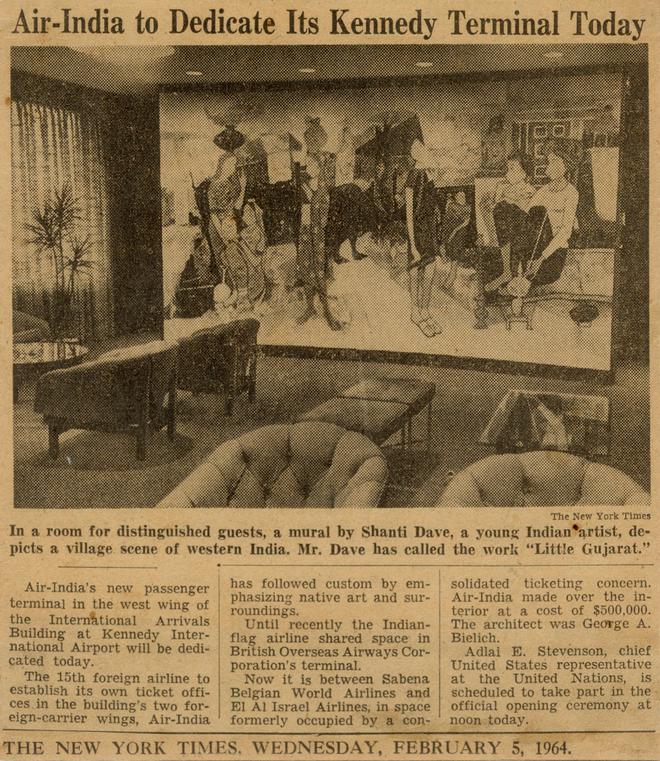
Despite decades of unmatched fame and success, today his name is rarely invoked in the same breath as his contemporaries such as V.S. Gaitonde, Tyeb Mehta and M.F. Husain. How did a superstar of Indian modern art fall off the radar so completely?
Highlighting the legacy
“Some of that has to do with how the industry works,” says Jesal Thacker, curator of a new retrospective on Dave’s work, Neither Earth, Nor Sky at the Delhi Art Gallery (DAG). She has a keen interest in India’s lesser known modern abstractionists. “There was a time when only the very narrative or representational art was in vogue — by which I mean the work of M.F. Husain, Tyeb Mehta, F.N. Souza.” Today, however, it is the wealth of Modern abstraction and expressionism, from Ram Kumar to Gaitonde, that is driving international auctions. “Even V.S. Gaitonde has got his due and been recognised in the last 10 years or less,” she says. A 1979 untitled work of Gaitonde’s, for instance, sold for a whopping ₹20.5 crore at Christie’s first-ever India auction in 2013.
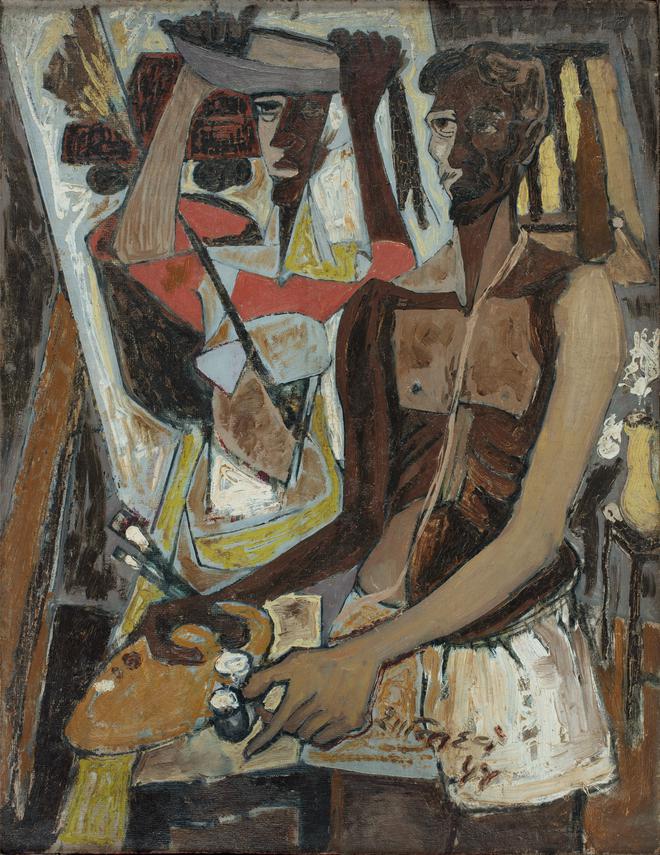
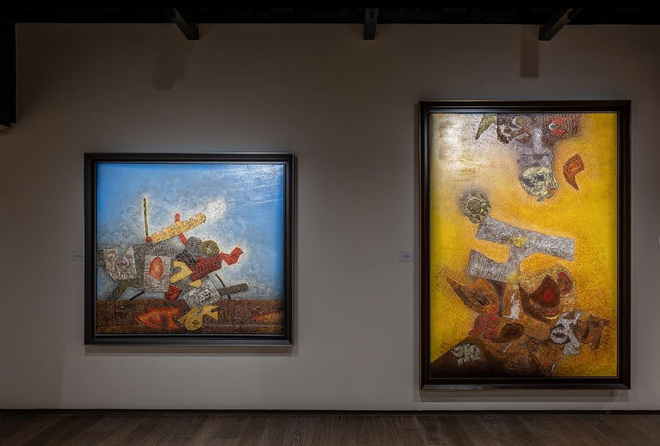
At the same time Dave, whose personality was “very withdrawn and inward-looking, sort of went into hiding”, adds Kishore Singh, head of exhibitions and publications at DAG. In the 1980s, the artist was drawn deeper into the Akademi’s administrative activities, he explains. “In the 1990s, Dave had a stroke, and following that he started making only very small works.”
When the markets opened up post-1991, Dave was nowhere on the scene. 1996 to 2008 was Indian contemporary art’s heyday and by the time the wealth of India’s modernist art began to be excavated, Singh says “there was already a wide gap between what Dave had done, his ongoing exhibitions and the people who remembered him”.
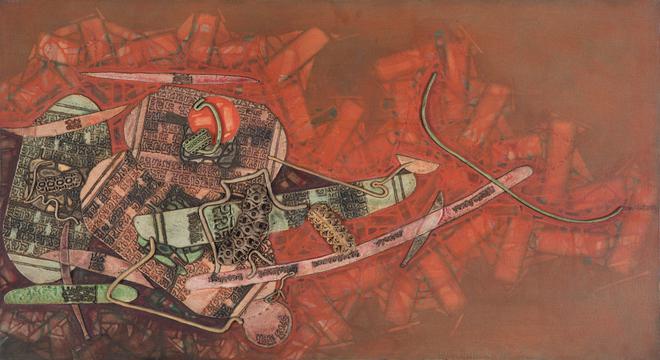
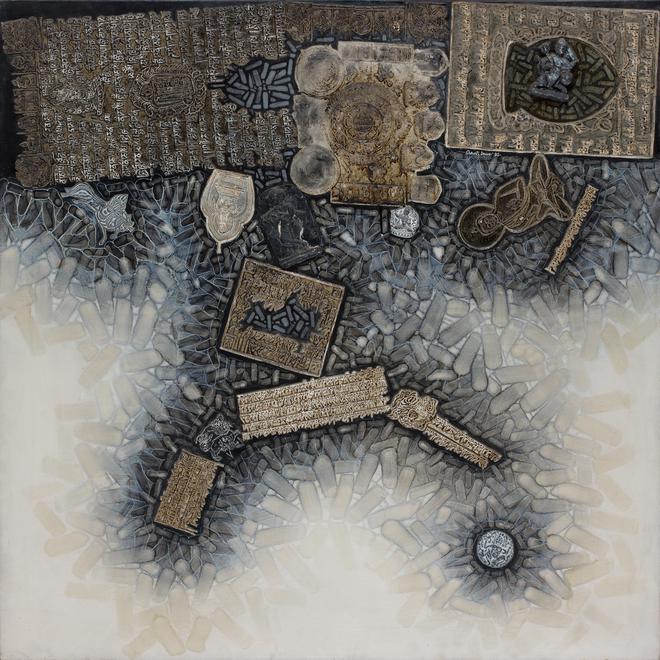
Now, as with several other Modern artists — such as G.R. Santosh and Chittaprosad — DAG has taken up the task of “establishing that legacy” for Dave. Neither Earth, Nor Sky features over 80 works, spanning the artist’s early experiments with a popular figurative style, and the ensuing plunge into abstractionism, in which the ‘akshara’ or the alphabet is a recurring motif and the artist’s everlasting muse.
Going behind the akshara
Dave was keen to explore “the script, the word, the language”, says Thacker, who calls him India’s first calligraphic abstractionist. “In his work, it is very prominently the Devanagari script. But he’s not playing with any words. It’s not any mythological mantra or anything. It wasn’t just about form, but how it was formed. How did language come about?”
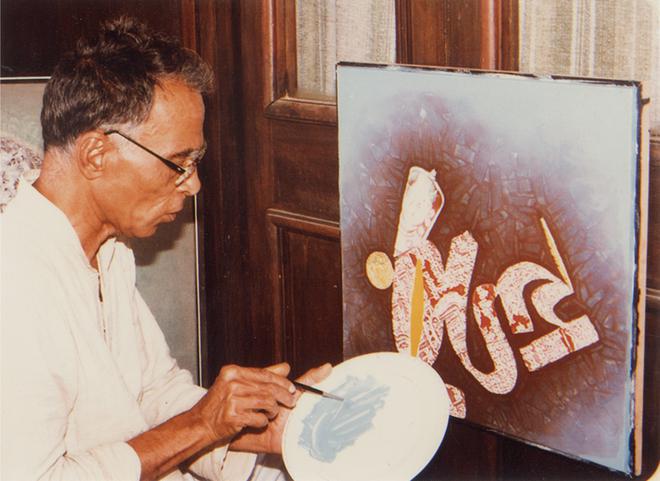
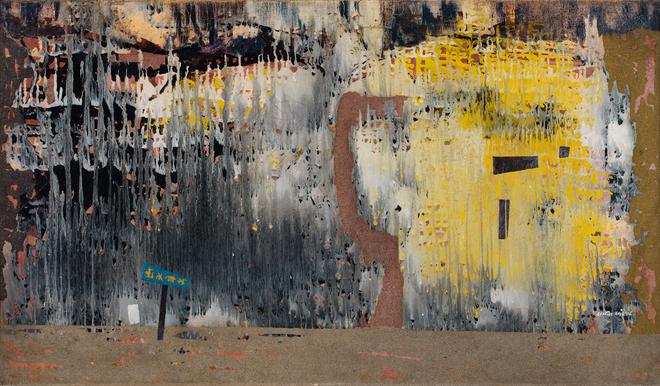
Drawing from an aural landscape more than a visual one, Dave would explore the akshara in a wide range of mediums, including encaustics (hot wax painting), watercolours, and printmaking. But his fascination with it is rooted in his pre-Baroda days working as a signboard painter. “Dave also came from a humble background, and ritualism was very much part of his life growing up, but that doesn’t come through in these paintings,” says Thacker.
In some of these works, letters appear scattered, as if celestial objects fallen from the sky; in others, they congeal to form cratons, stone tablet-like formations pushed together into supercontinents — a civilisational memory of sorts. With the exception of a series of monochrome watercolours Dave painted in 1965, in response to the India-Pakistan war, there are no statements in his oeuvre, only questions.
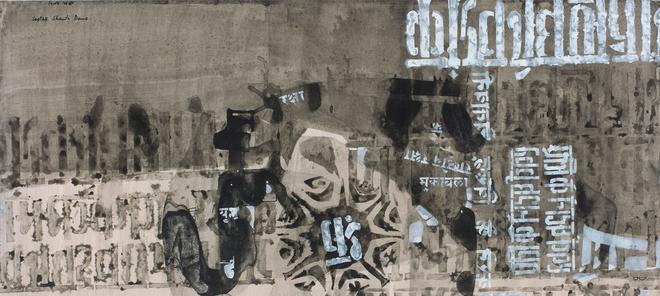
DAG has planned for Neither Earth, Nor Sky to travel to their Mumbai and New York galleries, and intends to organise panel discussions with curators and key stakeholders in the international art world to establish Dave’s place in the galaxy of Indian modern artists. “There needs to be patronage, critique, curators standing and writing for the artist,” says Thacker.
As for the artist: the intrigue remains. “The world over, people use script to understand, to communicate, and it is intriguing how one alphabet when strung with the next can create a ‘meaning’,” Singh has recorded Dave as saying in his biographical essay on the artist in a book accompanying the retrospective. “What is language? What is its power? I’m trying to understand this even now.”
The retrospective is on till September 10 at DAG New Delhi.
The writer is an independent journalist based in Mumbai, writing on culture, lifestyle and technology.







